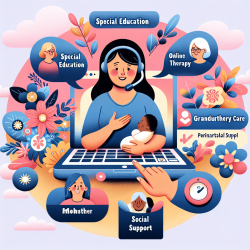Introduction
In the wake of the COVID-19 pandemic, concerns have been raised about the impact of increased online activity, including pornography use, on adolescents. A recent longitudinal study, "A Longitudinal Study of Adolescents’ Pornography Use Frequency, Motivations, and Problematic Use Before and During the COVID-19 Pandemic," provides valuable insights into this issue. This blog explores the findings and their implications for practitioners working with adolescents.
Study Overview
The study followed a large sample of adolescents, examining changes in pornography use frequency, motivations, and problematic use (PPU) from before to during the COVID-19 pandemic. Contrary to expectations, the study found that adolescents' pornography use characteristics remained relatively stable during this period. Notably, there were no significant changes in the frequency of use or motivations, and only slight, statistically insignificant changes in PPU levels.
Key Findings
- No significant changes in pornography use frequency or motivations were observed among adolescents during the pandemic.
- PPU levels showed a slight decrease in boys and a slight increase in girls, but these changes were not practically significant.
- The study highlighted the stability of adolescents' pornography use characteristics despite the pandemic-related stress and increased online activity.
Implications for Practitioners
For practitioners working with adolescents, these findings offer several takeaways:
- Focus on Context: Understanding the context of pornography use, such as motivations and emotional coping mechanisms, is crucial. Practitioners should consider these factors when addressing pornography use with adolescents.
- Individual Variability: The study found substantial inter-individual variability in pornography use characteristics. Practitioners should adopt a personalized approach, recognizing that adolescents' experiences and motivations may differ significantly.
- Encourage Open Dialogue: Encourage open and non-judgmental conversations about pornography use with adolescents. This can help them understand their motivations and potential impacts on their mental health and relationships.
Encouraging Further Research
The study underscores the need for further research to explore the nuances of adolescents' pornography use. Practitioners are encouraged to stay informed about ongoing research and consider how new findings can inform their practice. Engaging in professional development opportunities, such as webinars and conferences, can enhance understanding and support evidence-based interventions.
Conclusion
While the COVID-19 pandemic has led to increased online activity, this study suggests that adolescents' pornography use characteristics have remained stable. Practitioners should focus on understanding individual contexts and motivations, fostering open dialogue, and staying informed about ongoing research to effectively support adolescents.
To read the original research paper, please follow this link: A Longitudinal Study of Adolescents’ Pornography Use Frequency, Motivations, and Problematic Use Before and During the COVID-19 Pandemic.










